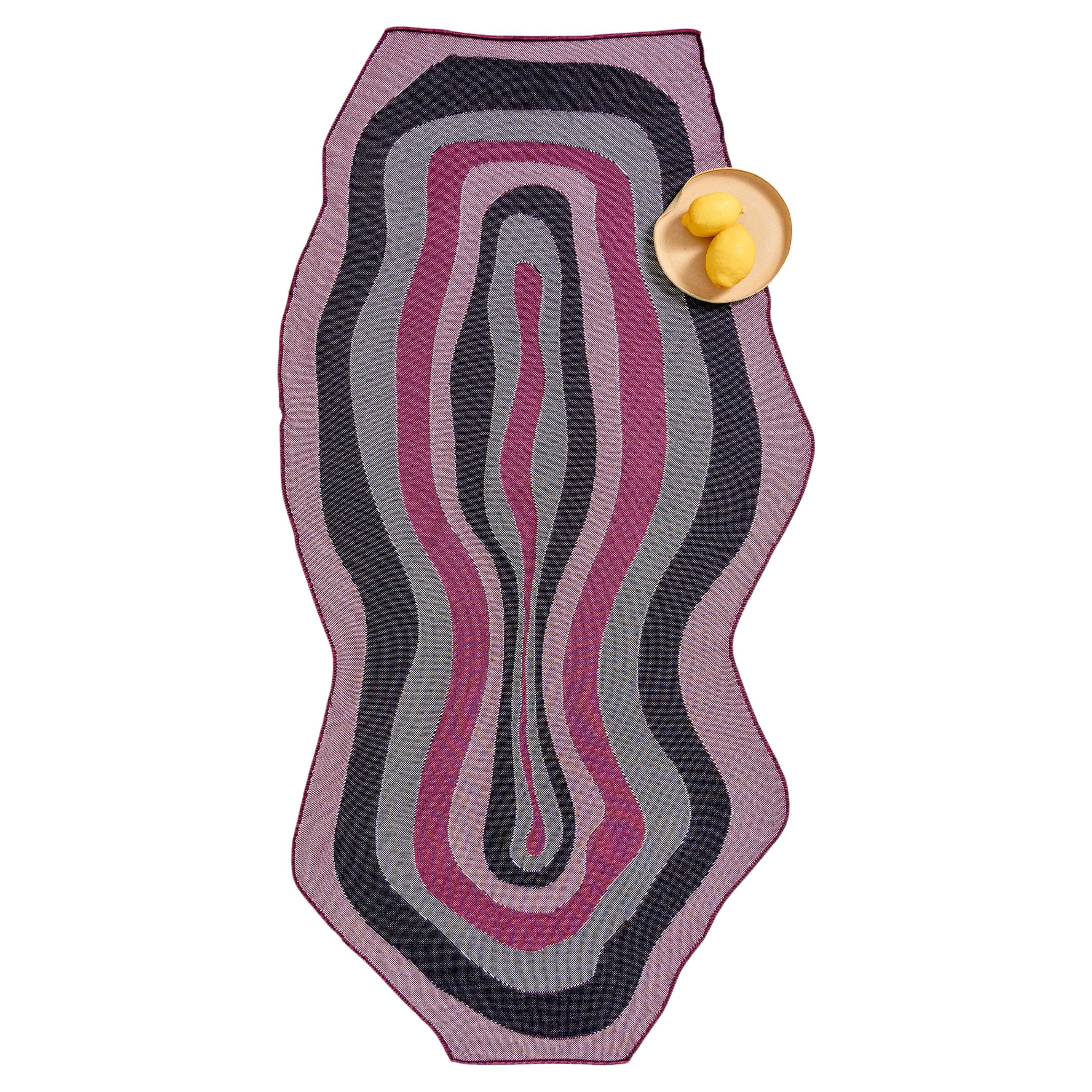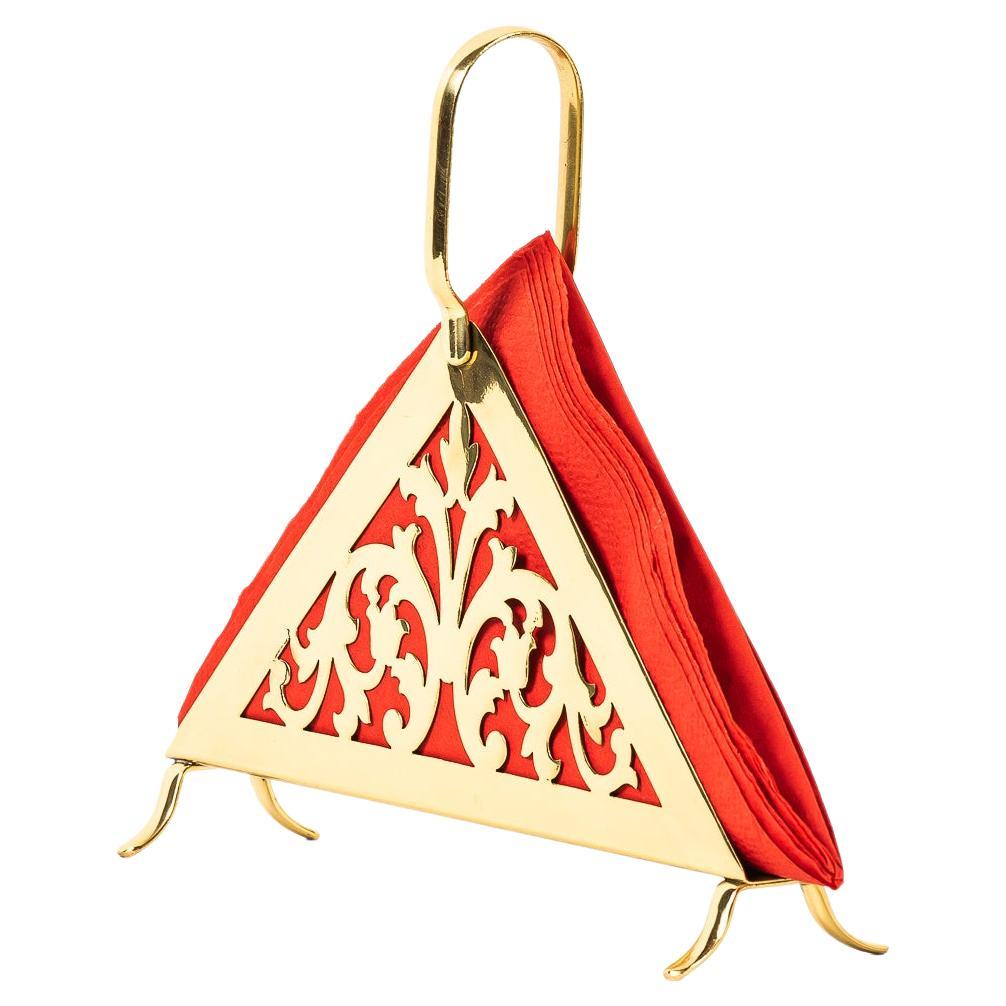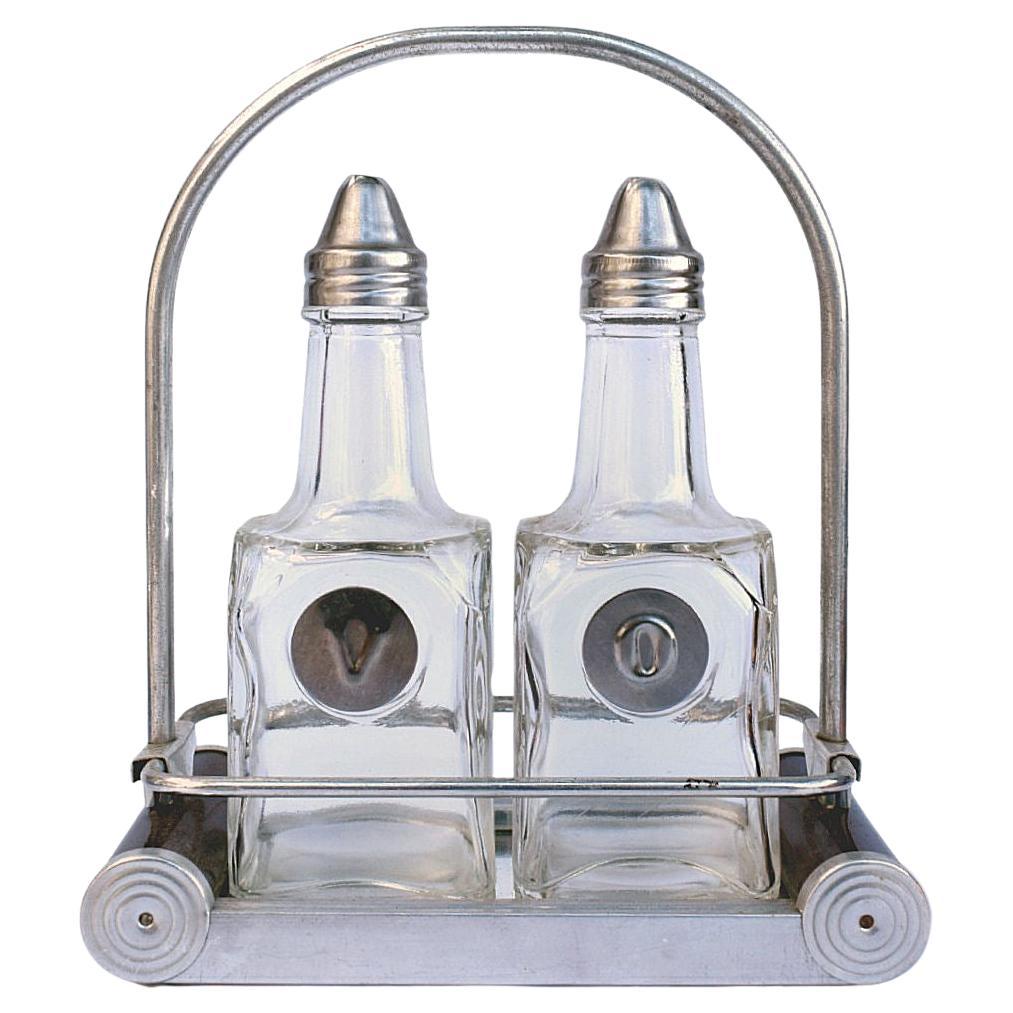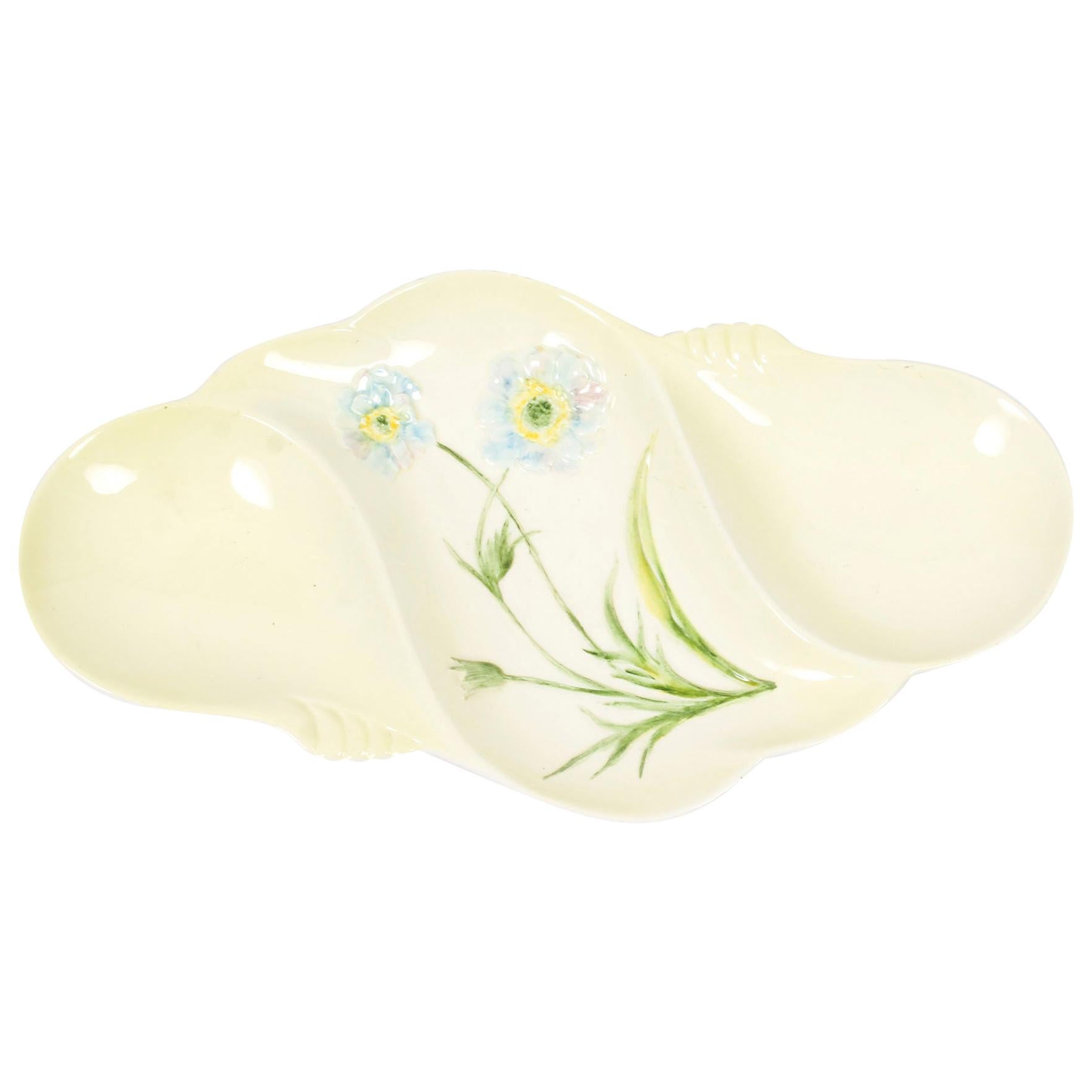Video Loading
Want more images or videos?
Request additional images or videos from the seller
1 of 22
Tablecloth 1930, Art Deco
About the Item
TableCloth
We have specialized in the sale of Art Deco and Art Nouveau and Vintage styles since 1982.If you have any questions we are at your disposal.
Pushing the button that reads 'View All From Seller'. And you can see more objects to the style for sale.
Why are there so many antiques in Argentina?
In the 1880 – 1940 there was a grate wave of immigration encouraged by the periods of war that were taking place.
1st World War took place between 1914 and 1918
2nd World War took place between 1939 and 1945
The immigrants options were New York or Buenos Aires. Tickets were cheap and in Buenos Aires they were welcomed with open arms, as it was a country where everything was still to be done.
Argentina was the country of new opportunities, labour was needed and religious freedom was assured, in many cases the of the family travel first until they were settled and then the rest of the family members join them.
In the immigrant museum “Ellis Island Immigrant Building” in New York you can se the promotional posters of the boats that would take them to a new life.
Between the years 1895 and 1896, Argentina had the highest DGP (gross domestic product) per capita in the world according to the Maddison Historical Statistics index, this situation arose due to the large amount of food being exported to European countries, which were at war.
The Argentinean ships left the port of Buenos Aires with food, but they returned with furniture, clothes and construction elements, (it´s common to see this the old buildings of the historic neighbourhood of San Telmo, the beams with the inscription “Made in England)”, as well as many markets that were built in Buenos Aires, such us the San Telmo Market, whose structure was brought by ship and afterwards assembled in 900 Defensa Street.
With the great influence of European immigrants living in the country, the children of the upper classes travelled to study in France, resulting in the inauguration of “La Maison Argentinienne”, on 27th of June 1928, in the international city of Paris, which hosted many Argentinians that were studying in Frace.
It´s the fourth house to be built after France, Canada and Belgium, being the first Spanish-speaking one. Still in place today (17 Bd Jourdan, 75014, Paris, France). Many of the children of these wealthy families who attended international art exhibitions, museums and art courses abroad, took a keen interest in the European style. This is why Buenos Aires was at the time referred as “The Paris of South America”.
Between the years 1890 and 1920 more than a hundred Palaces were built on Alvear Avenue the most exclusive avenue in Buenos Aires. Today some of these palaces have been transformed into museums, hotels and embassies.
In the year 1936, the Kavanagh building was inaugurated, it was the tallest reinforced concrete building in South America.
During 1994 the American Society of Civil Engineers distinguished it as an “international engineering milestone”, and it´s now considered a World Heritage of Modern Architecture.
At the time was common to hire foreign architects such as Le Corbusier, who visited Buenos Aires/Argentina in 1929 and in 1948 he drew up the blueprints for a house built in La Plata City (which was declared a World Heritage Site).
In 1947, the Hungarian architect Marcelo Breuer designed “Parador Ariston” in the seaside city of Mar del Plata. After an Argentinean student at Harvard University convinced him to come to Argentina. He worked on an urban development project in the Casa Amarilla, area of La Boca.
The Ukrainian architect, Vladimiro Acosta, arrives in Argentina in 1928 and worked as an architect until que moved to Brazil.
Antonio Bonet, a Spanish architect who worked with Le Corbusier in Paris, arrives in Argentina in 1937, where he carried out several architectural works and in 1938 designs the well-known BFK chair.
Andres Kálnay, of Hungarian origin, made around 120 architectural masterpieces, among which the former Munich brewery stands out, he even made the furniture’s design.
The German architect, Walter Gropius, director of the Bauhaus, lived in Argentina, where he wrote articles for “Sur” magazine and founded in Buenos Aires, an architectural firm with Franz Möller, who was also an architect, where he built two houses.
At the same time several famous designers decided to immigrate to Argentina, among them we can find the well-known French designer, Jean-Michel Frank, who arrived in the country in 1940 and also worked for the Rockefeller family.
Special pieces were made, which were sold exclusively in the country, such as the well-known German company “WMF”, who sold their products by catalogue, which were chosen by the ladies of high society in the list of wedding gifts, as well as the pieces designed by Christofle.
The Swiss sculptor Alberto Giacometti, made special pieces for Argentinean mansions.
In 1904 the first Jansen branch outside Paris was established in Buenos Aires, as the Argentinean clientele demanded a large amount of furniture, from the end of the 19th century to the mid-20th century.
In 1970, the brand Rigolleau Argentina made pieces authorised by Lalique.
The brands Maple and Thompson also set up shop in the country.
The French plastic artist, Marcel Duchamp moved to Argentina in 1918-1919.
Glass signed Gallé, Charder, Leverre, Schneider, Muller and other French firms. They were bought in flower shops and were given to ladies with beautiful floral arrangements.
Some furniture manufacturers travelled to international fairs and bough the patterns to produce the furniture in Argentina, such as the furniture firm Englander and Bonta, who bought the patterns ins Italy.
It is worth mentioning that in Argentina we have the largest community of Italians outside of Italy, as it is estimated that 70 percent of the inhabitants have at least one Italian descendant, followed by Spanish immigrants.
The most Important furniture stores in Argentina:
Comte is founded in 1934 (under the direct management of Jean Michel Frank in 1940).
Nordiska (Swedish company established in 1934).
Churba in 1960, a company that brought foreign designers to present their furniture in the country:
Denmark: (Arne Jacobsen, Finn Juhl, Bender Madsen, Ejner Larsen, Poul Kjaerholm, Hans Wegner)
Sweden: (Hans Agne Jakobsson, Gustavsberg)
United States: (Herman Miller)
Finland: (Lisa Johansson, Folke Arstrom, Tapio Wirkkala, Alvar Aalto, Timo Sarpaneva)
Swedish Factory: (Orrefors)
Italy: (Littala, Vico Magistretti, Emma Gismondi, Gae Aulenti, Angelo Mangiarotti, Elio Martinelli, Gianna Celada, Angelo Mangiarotti, Mario Bellini, Carlo Scarpa)
Finland: (Olivia Toikka)
Plata Lappas (Lappas Silver): a goldsmith shop founded in 1887 in Argentina by Alcibiades Lappas of Greek origin.
In 2019, in Argentina took place “the Art Deco world congress”, in which we participated as hosts invited by Geo Darder, founder of the Copperbridge – Foundation, in which prominent people from all over the world attended to learn about Art Deco in Argentina.
Argentina currently has more than 100 Art Deco buildings and another 90 Art Nouveau buildings throughout the city of Buenos Aires.
Argentina is a country that has not been involved in many wars, which is why it has been a refuge for works of art and antiques from different periods of time, unlike European countries. That is way many collectors, museums and antique dealers from all over the world visit it, you should not miss the opportunity to visit this great country.
Laura Guevara Kjuder, architect.
- Dimensions:Height: 55.91 in (142 cm)Diameter: 98.82 in (251 cm)
- Style:Art Deco (Of the Period)
- Materials and Techniques:
- Place of Origin:
- Period:
- Date of Manufacture:1930
- Condition:Wear consistent with age and use.
- Seller Location:Ciudad Autónoma Buenos Aires, AR
- Reference Number:1stDibs: LU6785234330782
About the Seller
5.0
Vetted Seller
These experienced sellers undergo a comprehensive evaluation by our team of in-house experts.
Established in 1982
1stDibs seller since 2022
21 sales on 1stDibs
Typical response time: <1 hour
- ShippingRetrieving quote...Ships From: Ciudad Autónoma Buenos Aires, Argentina
- Return PolicyThis item cannot be returned.
More From This SellerView All
- Champagne Cooler Style, Art Deco, 1930By WMF Württembergische MetallwarenfabrikLocated in Ciudad Autónoma Buenos Aires, CChampagne cooler It has a detail in the marble. We have specialized in the sale of Art Deco and Art Nouveau and Vintage styles since 1982.If you have any questions we are at your dis...Category
Vintage 1930s French Art Nouveau Wine Coolers
MaterialsMarble, Chrome
- Tablecloth Materials: wool and silk fabric , 1847, Lyon FranceLocated in Ciudad Autónoma Buenos Aires, CTableCloth Materials: Wool and Silk Fabrics, 1847 Currently (August 2023) a book with reference to different fabrics of the time can be seen at the Met museum in new york We have spe...Category
Antique 1840s French Art Deco Tableware
MaterialsWool, Silk
- 2 Art Deco Plates, 1930, GermanLocated in Ciudad Autónoma Buenos Aires, C2-Hanging lamps Material: Chromed Style: Art Deco Country:German To take care of your property and the lives of our customers, the new wiring has been done. We have specialized in ...Category
Vintage 1930s German Art Deco Chandeliers and Pendants
MaterialsChrome
- 3 Armchairs Art Deco, France, 1930Located in Ciudad Autónoma Buenos Aires, C3 armchairs Art Deco Year 1930 Materials : Wood Country: French Elegant and sophisticated armchairs. You want to live in the golden years, t...Category
Vintage 1930s French Art Deco Armchairs
MaterialsWood
- Art Deco Column, French, 1930Located in Ciudad Autónoma Buenos Aires, CColumn Art Deco Year: 1930 Country: French We have specialized in the sale of Art Deco and Art Nouveau and Vintage styles since 1982. If you have any questions we are at your dispos...Category
Vintage 1930s French Art Deco Pedestals and Columns
MaterialsWood
- Art Deco Box, 1930, FranceLocated in Ciudad Autónoma Buenos Aires, CWe have specialized in the sale of Art Deco and Art Nouveau and Vintage styles since 1982. If you have any questions we are at your disposal. Pushing the button that reads 'View All ...Category
Vintage 1930s French Art Deco Jewelry Boxes
MaterialsMirror, Wood
You May Also Like
- Tablecloth CN°1Located in Berlin, DEThis product belongs to our Collection N°1 - a collection that is a fun exploration of fluidity, spontaneity and non-linearity. With its charming wavy edges and organic shape, this ...Category
2010s German Tableware
MaterialsOther
- Art Deco brass napkin holder around 1930sLocated in Wien, ATArt Deco brass napkin holder around 1930s Polished and stove ena,meledCategory
Vintage 1930s Austrian Art Deco Tableware
MaterialsBrass
- Art Deco Modernist Condiment Set, France, c1930Located in Devon, EnglandVery stylish Art Deco condiment set, dating to the 1930's and originating from France. Two bottles marked O and V to symbolise Oil and Vinegar are h...Category
Mid-20th Century French Art Deco Tableware
MaterialsAluminum, Chrome
- Art Deco Set Decanter and 6 Glasses from 1930Located in Kraków, MałopolskaWe present very good condition, elegant and functional Art Deco set decanter and 6 glasses. Highly recommended item will be perfect complementation of the rooms in not only Classic ...Category
Vintage 1920s Czech Art Deco Porcelain
MaterialsGlass
- 1930s Royal Winton Grimwade Art Deco Snack DishBy Royal Winton GrimwadeLocated in London, GBThis is a beautiful English Art Deco Royal Winton Grimwade Cosmos snack dish circa 1930 in date. This plate is elegantly decorated with a pair of floweri...Category
Vintage 1930s English Art Deco Tableware
- Art Deco Silver Plated & Glass Preserve Jar, circa 1930Located in Devon, EnglandFor your consideration is this very sophisticated cut glass preserve jar held in a silver plate stand with matching lid . You can quite imagine this being used at afternoon high tea being held at the Savoy hotel. The stand itself is very attractive, fully hall marked E.P.N.S indicating the electro plating of the silver, fabulous filigree pattern detailing to the edges. Fantastic condition, free from tarnishing, scratches or any deterioration. The glass preserve jar itself is not only is it in remarkable condition but has a wonderful geometric pattern in a combination of jet black enamel with etched detailing and frost glass accents.Category
Mid-20th Century European Art Deco Tableware
MaterialsSilver Plate
Recently Viewed
View AllMore Ways To Browse
Religious Articles
Civil War Glasses
Set Of Antique Silver Spoons
Puiforcat Cannes
Tiffany And Co Spoon Ring
Tiffany Spoon Ring
Arne Jacobsen Michelsen
Cluny Silver Plate
Lundtofte Flatware
Pewter Salt Shaker Set
Tiffany Co Blackberries Tea Set
Vintage Tooth Pick Holders
Anton Michelsen Arne Jacobsen Flatware
Dansk Jette Flatware
Lenox China Service For 12
Michelsen Arne Flatware
Unger Douvaine
Vintage Sabatier Knives





